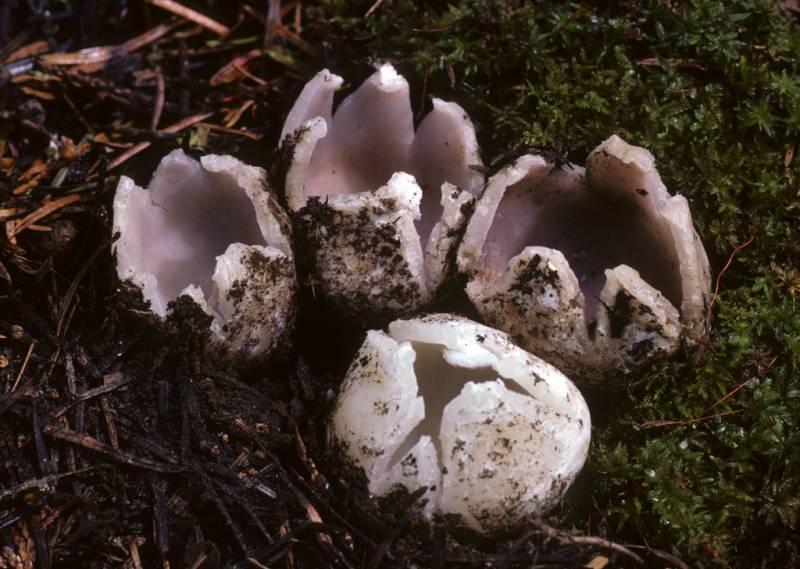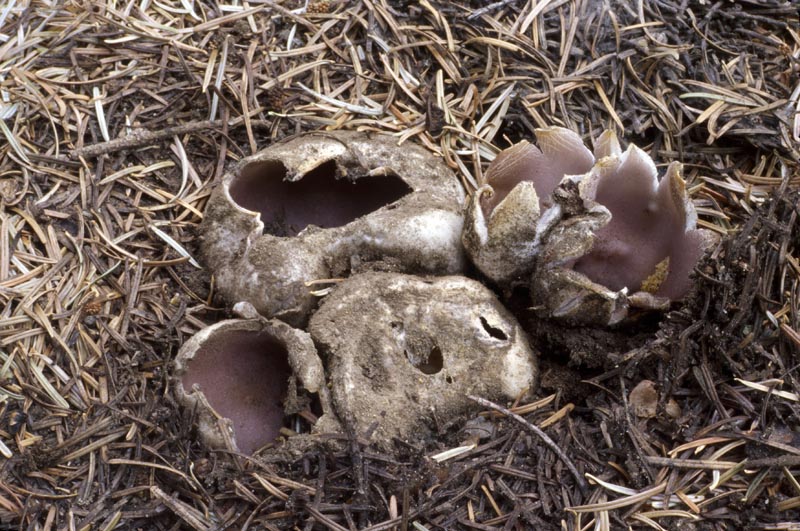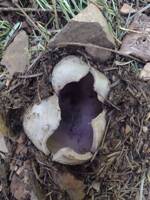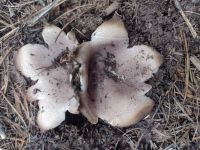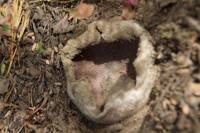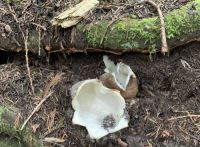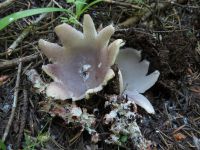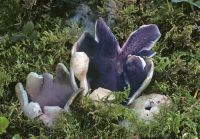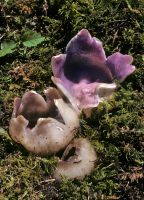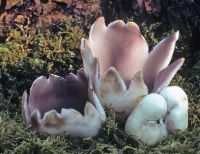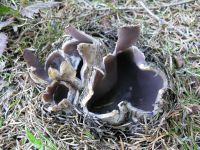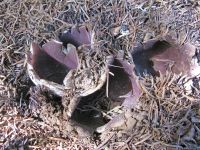Distribution: S. coronaria occurs in spring, mostly in the mountains, often near melting snow, and is a harbinger of morel season. It also occurs in Europe and has been called S. crassa (Santi) Pouzar and S. eximia (Durieu & Léveillé) Maire.
Spores: The spores are broadly ellipsoid (13--22 x 7--10 µm) with blunt ends and usually two large oil drops.
Conservation Status: Not of concern
Sarcosphaera coronaria is one of the larger, fleshier cups. Young fruitbodies may be overlooked as they tend to be nearly buried in the soil or duff. When found at this stage, they are spherical and can be confused with truffles; later they crack open and expand into ragged-edged, star-shaped cups (hence its specific epithet, coronaria, Latin for crown). The interior usually is some shade of violet and contrasts beautifully with the whitish to pale grayish exterior that often retains a coating of soil. S. coronaria occurs in spring, mostly in the mountains, often near melting snow, and is a harbinger of morel season. It also occurs in Europe and has been called S. crassa (Santi) Pouzar and S. eximia (Durieu & Léveillé) Maire.
PNW Herbaria: Specimen records of Sarcosphaera coronaria in the Consortium of Pacific Northwest Herbaria database
CalPhotos: Sarcosphaera coronaria photos

